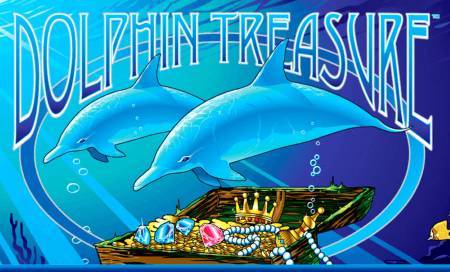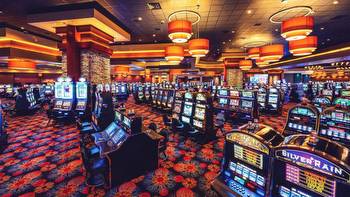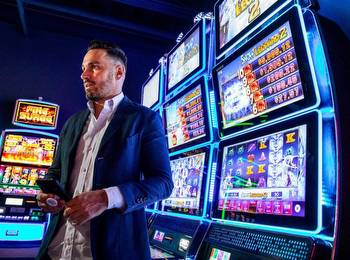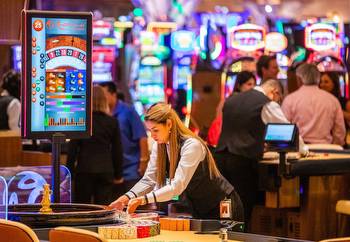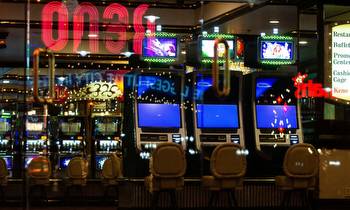Sightline Payments Bets On Cashless Casinos

When the pandemic hit in March 2020, digital payment and payout options in North America’s corporate and tribal-owned casinos were almost nonexistent. As the scramble to reopen began, Sightline Payments Co-founder and Executive Vice President Omer Sattar started getting the calls he’s been expecting for about a decade.
In a recent interview with PYMNTS CEO Karen Webster, Sattar said Sightline’s years of planning behind a vision of cashless casinos suddenly spun into reality, thanks to the pandemic push.
“We had been preparing for, building, integrating our network digital payments systems, [then in] May of last year we started getting calls, and it was go-go-go,” he said. “They all wanted to open up their properties [with cashless] options, so we ended up launching the first cashless casinos as early as October [2020] and have been adding them ever since.”
In 2021, along came Resorts World Las Vegas, the first new casino resort to open in that city in 12 years, and its new cashless value prop. “This is a big deal,” Sattar said. “This is a $4.5 billion dollar casino resort [where] you can play in the entire property at any slot or any table entirely from your cell phone, you never have to touch cash if you don't want to.”
Powered by Sightline’s integrated touchless payments app, the model is about to hit big — a point driven home by the company’s recent $244 million fundraise that minted Nevada’s first Fintech unicorn — as the company hit a $1 billion valuation in August.
Now, the sky’s the limit. “I would think by the end of next year there will be at least 100 casinos around the country that are offering some form of cashless,” Sattar told Webster. “We’re estimating that probably 50 percent to 75 percent of casinos are going to have some form of cashless [payment/payout option within] the next 36 months.”
Per Sattar’s math, 11 casino companies control roughly half of all slot machines in the U.S. Together with some 450 tribe-owned casinos, he estimates “the entire universe” of companies Sightline is targeting at about 1,500 in the U.S. and Canada. Of these, he says, about half that number “really move the needle” on volume, so he sees adoption ramping up quickly.
“Time To Play” Is The New Gaming Metric To Watch
Like the rest of the payments world in the pandemic era, Sightline’s sights are set on creating a self-contained gaming payment/payout experience that aligns with the connected economy.
“The key is building the right ecosystem,” Sattar said. “The way it's being designed, someone should be able to take their mobile phone and decide that they want to play cashless or interact in some kind of digital manner as opposed to with cash” any time at any game of chance.
To optimize the touchless casino gaming experience, Sightline focuses on a novel metric Sattar calls “time to play.” It’s borrowed from the big disruptors of digital experience.
“If I'm Uber, DoorDash or someone like that, from the time a patron downloads an app to create an account to fund an account … it should be a certain timeframe.” For touchless gaming, Sattar said three minutes is the winning number. “Right now, the way the ecosystem is built … we're at about seven minutes. But when we get to that three-minute mark, we think that that's the magic number to consumer adoption.”
Sounding a bit like a super-app for casino gaming, Sattar sees the entire live gaming and online gaming metaverse converging to the point where Sightline will be able to power a variety of touchless real-time payments/payouts over time.
“Once you have that single mobile app with a single account tied to loyalty, you can spend money in sports and gaming. You could be at a sports arena, you could also be paying slots or tables, you could be paying for your food and beverage or retail, dining, nightlife and also have access to all your funds outside of the gaming ecosystem. It is a true omnichannel consumer-centric ecosystem that's getting deployed … not just gaming. It's gaming and entertainment.”
High Rollers And Payments Flexibility
While jurisdictional issues will continue to decide how gaming accounts are funded, Sattar sees an immediate future where optionality is digital and ubiquitous.
Sattar told Webster that “prepaid becomes an access point. Think about it as some kind of stored value account. How can you fund that account? It should be all the ways a patron wants to fund it. It's credit cards, its debit cards, it's Zelle, RTP, Venmo, PayPal, BlackHawk, Green Dot. Give the patron all the flexibility possible to bring their money in any way that they want.”
Sightline’s support for responsible gaming, including player notifications about how much they’re betting and more, may help ease the transition in more stringent jurisdictions.
“We believe adoption is driven by giving consumers flexibility, allowing them to bring their money in as many ways [they] want and cash out in as many ways as [they] want,” he said, adding that “we've done so many focus groups around this, and the number one reason people tell us that they want to enroll in this kind of ecosystem is actually for payouts. More often than not they don't really want to spend their money. They just want to know they have it.”
That becomes critical when a player wins, say, $500 on a $500 bet and wants to immediately resume play — with the house’s $500 — while leaving their own $500 for other things.
“That’s when payouts are critical” to customer experience, Sattar said told Webster.
Noting that “we don't want to go to Europe, we want to do [this] in the U.S. and Canada, and we do still want to go to Macau,” Sattar added that “the framework of the product we're laying right now, especially from the payments standpoint, eventually evolves way beyond prepaid. That's what lays the foundation for the next 10 years, so I think that's where we spend the money” that investors are putting into a concept some see as the rare safe bet.
While Sattar couldn’t disclose specific results and data from the cashless casinos in operation, he pointed to client Boyd Gaming, whose CEO said on a recent earnings call that they will have more than 20 cashless casinos operating by the end of 2022. Caesars is also mulling the move.
Sattler said that in recent weeks cashless volume from casinos is “in the tens of millions,” adding that as adoption increases, “we will probably see somewhere between $20 billion to $30 billion in volume just on the cashless side,” as the larger gaming operators get up and running.







